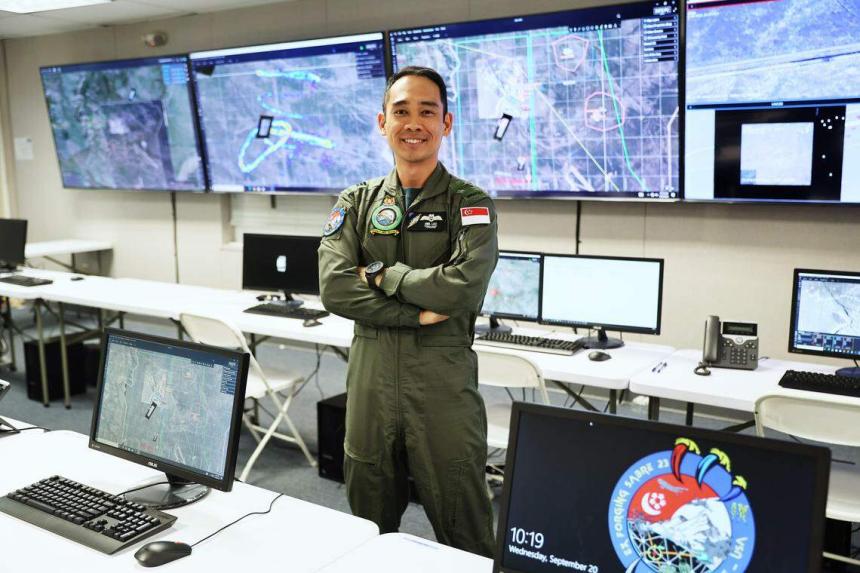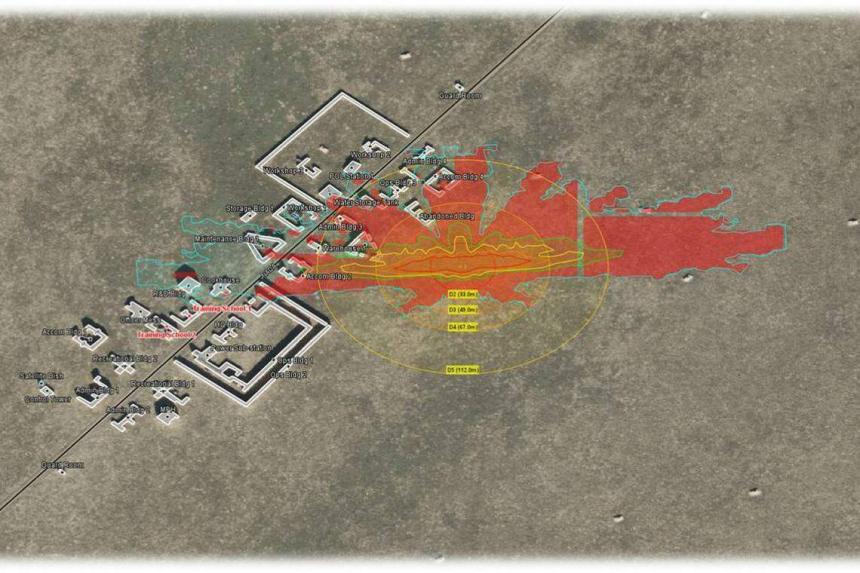MOUNTAIN HOME, Idaho – At the heart of Exercise Forging Sabre is an integrated command post dominated by multiple screens that inform the decision-making of Singapore Armed Forces commanders.
Ranging from live feeds captured by drones to a large map of the battlefield that indicates the positions of friendly and enemy forces, the command and control information system (CCIS) plays a crucial role in war-fighting efforts.
Introduced in 2021’s iteration of the SAF exercise held in the United States, the system makes use of artificial intelligence (AI) and data analytics to produce battlefield solutions.
This time around, several enhancements have been made, including the ability to recommend the best weapon response to multiple targets, and the capacity to assess the extent of possible collateral damage in order to minimise it.
During a media visit on Wednesday (US time) to the integrated command post at Mountain Home Air Force Base in Idaho, the Republic of Singapore Air Force’s Captain Emil Lau, who worked on the development of the CCIS, said the tool has sped up many processes, which in turn results in quicker decisions being made.
The 35-year-old added that the exercise has given his team the opportunity to verify if the new additions are useful in operations. “Generally, the response has been great. Across the command post, all (the) battle staff have been using the new modules liberally,” he said.
One of the CCIS’ new modules gives the system the capability to recommend solutions for tackling multiple targets.

As information streams back to the command post from various assets, the system can now digest the data and provide the best course of action to take down multiple threats.
In the demonstration shown to the media, the CCIS recommended two possible assets to handle two targets that popped up on the screen. The mission commanders eventually decided to have one of the Singapore Army’s High Mobility Artillery Rocket Systems deal with one threat and leave the other to a fighter jet. The deciding factor was the assets’ relative distance from the targets.

But rather than taking the CCIS’ recommendations as gospel, the final say remains in the hands of the commander, said Lieutenant-Colonel Ray Lee of the RSAF, adding that the CCIS is not meant to remove humans completely from the decision-making process.
LTC Lee, 44, one of the mission commanders for Exercise Forging Sabre, said the information put up on the CCIS allows for faster and better-informed decisions.
“Ultimately, the commander will make his own decision based on the recommendation... For our kind of operations, it’s very difficult to leave it to a computer to decide whether to strike or not,” he said.
For instance, the CCIS can now map out how to minimise collateral damage. The system can estimate the impact that different weapons can cause in specific areas, which Capt Lau described as being “very important”.
“(It) allows us at a quick glance to understand the impact of our operations on the vicinity of where we’re working on,” he said, explaining that the module takes nearby buildings into account.

However, commanders can still choose to proceed without following CCIS recommendations.
A scenario presented to the media showed that collateral damage would be caused to several buildings, but as the command post received intelligence informing it that civilians in the area had already been evacuated, the operation’s commander could choose to proceed with the strike.

LTC Lee said: “We’ll do our best to ensure the safety of civilians, as well as sensitive buildings that we will not hit.
“But information... will not be perfect. So... we’ll make the best-informed decision at that point in time.”


